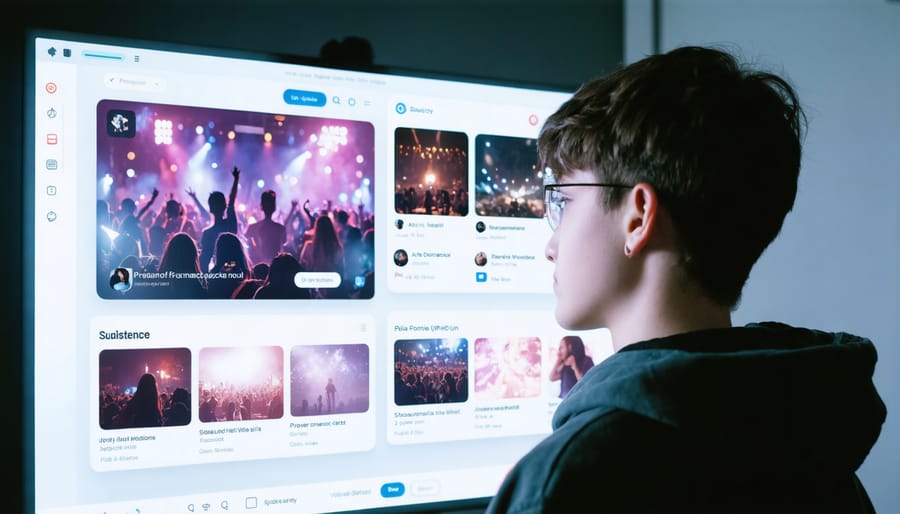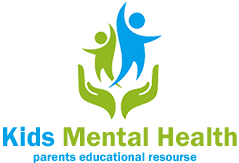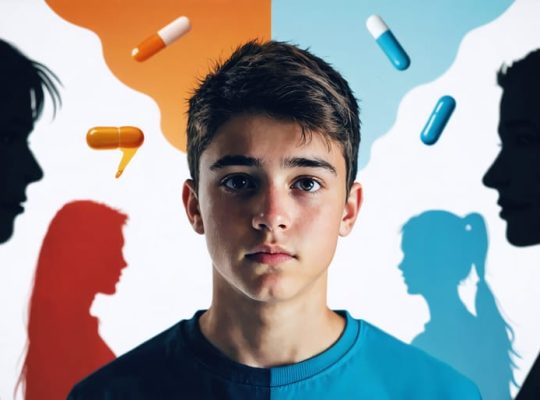Substance abuse tears at the fabric of our communities, creating ripples that extend far beyond individual struggles. As parents, educators, and healthcare providers witness the growing intersection of social media and substance use among young people, understanding these complex dynamics has never been more crucial. Recent studies show that social media exposure to drug and alcohol content is affecting your child’s mental health in unprecedented ways, with 60% of teens reporting regular exposure to substance-related content online.
The social impact of substance abuse manifests in broken families, strained friendships, and disrupted educational paths. While individuals battle addiction, their communities face increased healthcare costs, rising crime rates, and diminished workplace productivity. Most concerningly, the normalization of substance use on social platforms creates a dangerous narrative that can influence vulnerable young minds.
Yet within this challenging landscape, there’s hope. Communities are discovering innovative ways to support affected families, schools are implementing evidence-based prevention programs, and healthcare providers are developing more effective, compassionate approaches to treatment. By understanding these social dynamics, we can work together to build stronger support systems and create positive change.
How Social Media Normalizes Substance Use

Content Glamorizing Substance Use
Social media and popular culture increasingly portray substance use in an appealing light, presenting serious challenges for parents and educators. From carefully curated Instagram posts showing glamorous party scenes to viral TikTok trends featuring drinking games, young people are constantly exposed to content that minimizes the impact of substance abuse.
Influencers often share stories of their weekend adventures involving alcohol or recreational drugs, garnering millions of likes and creating a false narrative that substance use is essential for social success. These posts rarely show the morning after, the poor decisions, or the long-term consequences.
Popular music and entertainment media frequently reference substance use in lyrics and scenes, presenting it as a normal part of growing up or achieving status. This normalization can be particularly dangerous for impressionable young minds who may not yet have the critical thinking skills to question these portrayals.
What’s particularly concerning is how these glamorized depictions often overshadow real-world consequences. While social media shows the party, it doesn’t show the struggles of addiction, broken relationships, or health complications. Parents and educators need to have open conversations with young people about these misleading representations and help them develop media literacy skills to recognize and question these potentially harmful messages.
Peer Pressure in the Digital Age
Today’s digital landscape has transformed how peer pressure impacts substance use decisions, particularly among young people. Social media platforms and online communities create constant exposure to substance-related content, making it challenging for parents and educators to monitor influences on their children.
Dr. Sarah Chen, an adolescent psychiatrist, notes: “Teens are now exposed to substance use through carefully curated social media posts that glamorize drinking and drug use, making these behaviors appear more common and acceptable than they actually are.”
Online peer pressure can take various forms, from direct messages encouraging substance use to subtle influences like seeing friends posting party photos or following influencers who promote drinking culture. The constant connectivity means that pressure doesn’t end when school does – it follows young people into their homes through their devices.
What makes digital peer pressure particularly concerning is its persistence and reach. A teenager might receive multiple messages from different social circles simultaneously, making it harder to resist. Additionally, the fear of missing out (FOMO) intensified by social media can drive young people to participate in risky behaviors to feel included.
Parents and educators can help by maintaining open discussions about online influences, teaching critical thinking skills to evaluate social media content, and encouraging healthy offline activities and relationships that build resistance to digital peer pressure.
Direct Routes to Substance Access
Online Drug Markets and Sales
Social media platforms have become unexpected marketplaces for substance sales, creating new challenges for parents and educators. Popular platforms like Instagram, Snapchat, and TikTok are increasingly being used by dealers to advertise and sell various substances, from vaping products to prescription medications. These online markets are particularly concerning because they make accessing substances easier than ever for young people.
Dealers often use coded language, emojis, and seemingly innocent hashtags to evade detection while marketing their products. For instance, what appears to be a casual post about wellness products might actually be advertising illicit substances. The rise of these digital marketplaces has coincided with increased concerns about the effects of vaping and other substance use among youth.
What makes these online markets particularly dangerous is their accessibility and anonymity. Young people can browse and purchase substances from the privacy of their phones, often without parents’ knowledge. Additionally, there’s no way to verify the quality or safety of products sold through these channels, putting users at significant risk.
Parents and educators can help by maintaining open communication about online safety, monitoring social media activity, and staying informed about current digital trends and code words used in these markets.
Targeted Advertising Risks
In today’s digital landscape, targeted advertising algorithms have become increasingly sophisticated, creating a concerning pathway for substance-related content to reach young audiences. These algorithms track online behavior, interests, and social connections, potentially exposing children to advertisements about alcohol, tobacco, or other substances, even when they’re not actively seeking such content.
Social media platforms and gaming sites frequently use data-driven advertising that can inadvertently connect young users with substance-related content. For instance, a teenager following fitness influencers might receive ads for performance-enhancing substances, or someone interested in party planning could see alcohol-related promotions.
Parents should be aware that even seemingly innocent searches or interests can trigger these algorithmic recommendations. The challenge is compounded by the fact that many young people access multiple devices and platforms, making it difficult to monitor all potential exposure points.
To protect children from this targeted advertising, families can:
– Enable content filtering on devices and platforms
– Use ad-blocking software when appropriate
– Have open discussions about advertising tactics
– Monitor children’s online activities
– Report inappropriate advertisements
– Teach critical thinking skills about digital marketing
Understanding these risks helps parents and educators better prepare children to navigate the digital world safely while maintaining their well-being.
Warning Signs for Parents
Digital Red Flags
In today’s digital age, certain online behaviors can signal potential substance use concerns. Parents and educators should be mindful of sudden changes in social media activity, particularly increased interest in substance-related content or following accounts that promote drug use. A noticeable shift in posting times, such as frequent late-night activity or erratic posting patterns, may warrant attention.
Watch for changes in language used in messages or posts, including recurring references to partying, unusual coded terms, or excessive use of emojis that might represent substances. The appearance of new online friends or groups with concerning interests, combined with disconnection from longtime social circles, can be significant indicators.
Digital financial patterns may also raise concerns. Multiple small cash transfers through payment apps, frequent requests for money, or unusual online purchases could suggest substance-related transactions. Similarly, location sharing that shows frequent visits to unfamiliar addresses or concerning areas might need investigation.
Pay attention to the emotional tone of social media posts. A shift toward more negative content, expressions of hopelessness, or posts about escaping problems could indicate underlying struggles. Photos or videos showing dramatic personality changes or concerning situations at parties should prompt caring conversations.
Remember, these signs don’t necessarily confirm substance use but rather suggest the need for open, non-judgmental dialogue. Early recognition of these digital red flags can help initiate supportive interventions before problems escalate.
Changes in Offline Behavior
Social media’s influence on substance abuse often extends beyond the digital world, manifesting in significant changes to a person’s real-life social behaviors and interactions. Many parents and educators notice that teens who are exposed to substance-related content online begin displaying altered social patterns, such as switching friend groups or suddenly spending time with peers known to use substances.
Dr. Sarah Chen, an adolescent psychiatrist, notes: “We often see young people gradually withdrawing from activities they once enjoyed and seeking out new social circles that align with behaviors they’ve been exposed to online. This shift can happen subtly at first.”
These behavioral changes might include avoiding family gatherings, missing school events, or dropping out of sports teams and clubs. Young people may also start requesting more privacy, keeping unusual hours, or becoming defensive when asked about their whereabouts. Parents often report that their children begin using new slang terms for substances learned online or displaying knowledge about drug culture that seems beyond their years.
A concerning pattern is the normalization of substance use in real-world settings after seeing it glorified on social media. Teens might begin viewing substance use as a necessary component of socializing or attempt to recreate situations they’ve seen portrayed online. This can lead to increased risk-taking behavior at parties and social gatherings, where the pressure to match online expectations meets real-world opportunities for substance use.

Protective Strategies
Digital Literacy Education
In today’s digital landscape, teaching young people to think critically about substance-related content they encounter online is crucial to protect children from substance abuse. Social media platforms often glamorize drug and alcohol use, making it essential for parents and educators to help youth develop strong digital literacy skills.
Start by encouraging open conversations about social media content. Ask questions like “Why do you think this was posted?” and “How does this make you feel?” These discussions help young people recognize manipulation tactics and understand the difference between reality and carefully curated posts.
Teaching teens to fact-check information and identify credible sources is equally important. Help them understand that trending hashtags or viral challenges involving substances often originate from individuals or groups with questionable motives. Show them how to verify information using reliable health resources and recognize sponsored content that may promote harmful behaviors.
Consider setting aside regular “digital literacy moments” during family time or classroom discussions to analyze social media posts together and practice these critical thinking skills.

Open Communication Approaches
Building a foundation of trust and open dialogue is crucial when addressing substance abuse concerns with loved ones. Start by creating a safe, non-judgmental space where family members feel comfortable sharing their thoughts and experiences. Listen actively without interrupting, and validate their feelings even if you disagree with their choices.
Regular family meetings or one-on-one conversations can help maintain this open line of communication. Choose calm moments for these discussions rather than during conflicts or crisis situations. Use “I” statements to express your concerns, such as “I worry about your health” instead of accusatory language.
Encourage honest conversations about peer pressure, stress, and other factors that might lead to substance use. Share age-appropriate personal experiences when relevant, as this can help normalize discussions about difficult topics. Remember that building trust takes time and consistency.
If someone opens up about substance use, respond with empathy and support rather than criticism. Thank them for their honesty and work together to explore solutions, whether that means seeking professional help or developing healthier coping mechanisms. Keep the dialogue ongoing, as recovery is often a journey rather than a destination.
Healthy Social Media Habits
Establishing healthy social media habits is crucial in preventing substance abuse influences online. Start by setting clear boundaries around social media use, such as designated “tech-free” times during meals and before bedtime. Parents and educators can work together to help young people develop critical thinking skills when encountering substance-related content online.
Encourage teens to follow positive role models and health-focused accounts while unfollowing or muting accounts that promote substance use. Teaching young people to recognize and report harmful content empowers them to be responsible digital citizens.
Create alternative activities that promote real-world connections. Family game nights, sports, or creative hobbies can provide fulfilling experiences that reduce the need for constant social media engagement. When using social media, practice mindful scrolling by setting time limits and regularly checking in with emotions.
Consider using app features that track screen time and set daily limits. Many platforms now offer built-in tools to help manage usage. Most importantly, maintain open conversations about social media experiences, creating a safe space where young people feel comfortable discussing concerning content they encounter online.
Remember, the goal isn’t to eliminate social media but to build a balanced, healthy relationship with these platforms while staying aware of potential substance abuse influences.
The impact of substance abuse on our communities extends far beyond individual struggles, affecting families, workplaces, and society at large. As we’ve explored throughout this article, substance abuse creates ripple effects that touch every aspect of social life, from increased healthcare costs and crime rates to damaged family relationships and reduced workplace productivity.
Understanding these widespread consequences helps us recognize why prevention and support are crucial community responsibilities. Early intervention and comprehensive treatment programs not only help individuals struggling with substance use but also strengthen the fabric of our society. By supporting those affected and their families, we create healthier, more resilient communities.
Remember that recovery is possible, and help is available. Whether you’re personally affected by substance abuse or concerned about a loved one, reaching out to professional support services is a vital first step. Local treatment centers, support groups, and healthcare providers offer various resources and programs tailored to different needs and circumstances.
Moving forward, we must continue to break down stigma, advocate for accessible treatment options, and foster supportive environments where people feel safe seeking help. By working together as a community, we can address the social impact of substance abuse while ensuring those affected receive the compassion, understanding, and support they need to heal and recover.







